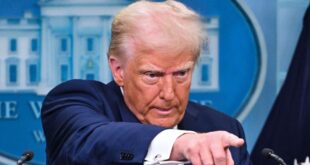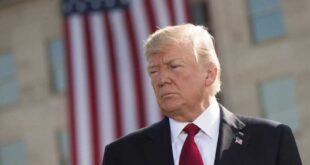Nickolas Gvosadev
If the United States can harness the disruptive impacts of both technological change and geopolitical competition, it can regenerate its economic capacity and its leadership of the community of free nations.
The COVID-19 pandemic and the Russian invasion of Ukraine mark the end of the post-Cold War era, which was defined by the optimistic idea that globalization creates conditions for lasting security. As the international system returns to a state of conflict and competition, especially the fears of an impending clash between the United States and China, the world is also facing the disruptions caused by climate and environmental crises and the looming specter of a resource trilemma—ensuring that the world’s people have access to food, clean water, and energy.
In such conditions, the technologies that will be developed as part of the “Fourth Industrial Revolution” will be critical. In January 2020, Russian president Vladimir Putin told Russian lawmakers that the great power competition to “determine the future” would be technological in nature, especially in the areas of “artificial intelligence, genetics, new materials, energy sources [and] digital technologies.”
The fighting in Ukraine—and now Gaza—has demonstrated how new technologies—unmanned aerial and maritime systems, combined with artificial intelligence and low-Earth orbit satellites—enable precise guided strikes on an adversary’s capabilities. The disruptions to global food and energy markets caused by the Russian invasion highlight the need for new, secure, and dependable sources closer to home, which enemies cannot jeopardize. Meanwhile, the threat of new pandemics continues to loom over all of us. At the same time, we face the “contagion” transmitted via social media that can infect a nation’s information supply with disinformation. We are watching the latest iteration of this in the “rehabilitation” of Osama bin Laden on TikTok, recharacterized as a freedom-fighting truthteller against the West.
In the past, we often thought about national security in very narrow terms—the immediate projection of “hard” power (military force). But in today’s conditions, hard power is necessary but insufficient if adversaries can shut off energy access and disrupt communications or if disease weakens the population and brings the economy to a standstill. Moreover, as Ukrainian president Volodymyr Zelensky has noted, a lack of industrial capacity—and spiraling crises around the world—are producing shortfalls in the military assistance Ukraine has relied upon to thwart the Russian invasion. Beyond the question of industrial capacity, energy policy, and technology policy are both important components of national security policy—and connect to the domestic imperative that the State Department’s special coordinator for global infrastructure Helaina Matza recognizes must be behind any national security initiative: “grow our own economy [and] employ our own people.”
The United States is grappling with a dynamic and unpredictable global security environment. The technological piece is critical as part of a larger puzzle driven by the need to reduce dependence on authoritarian states for natural resources. This can spur domestic technological innovation and movement toward a green energy revolution, giving new purpose to Cold War alliances that move beyond military cooperation towards closer technical and economic relationships that will benefit their middle classes. To succeed in these conditions, a country must have both an educational and legal culture that supports innovation and the manufacturing capacity to turn those ideas into finished products—including the defensive weaponry upon which our hard power rests—supported by supply chains for raw materials and components that draw on our own capacities and those of our friends and partners.
But this puts new demands for seriousness on the part of our political leadership. We need a commitment to the industrial rejuvenation of the United States, in conjunction with key partners and allies, that rests on an enduring policy framework not subject to sudden political shifts. I’ve argued in the past that a climate geopolitics framework touches on both right and left priorities in a way that can produce a lasting bipartisan consensus. This is essential for signaling to the business community that it is safe to make long-term investment decisions—rather than seeing policies shift every two or four years based on who controls the White House and Congress.
We live in challenging times. Yet, if the United States can harness the disruptive impacts of both technological change and geopolitical competition, it can regenerate its economic capacity to respond to crises—and rejuvenate its leadership of the community of free nations.
Nikolas K. Gvosdev is the director of the National Security Program at the Foreign Policy Research Institute.
 Geostrategic Media Political Commentary, Analysis, Security, Defense
Geostrategic Media Political Commentary, Analysis, Security, Defense





